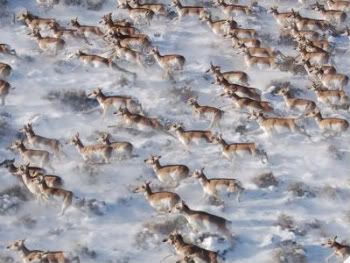Large mammal migrations vanishing

By Jeremy Hance Watch any nature documentary and it’s sure to include pulse-pounding footage of large herbivores migrating across African plains, Asian steppe, or the Arctic tundra. The images have become iconic: wildebeest forging a crocodile-inhabited river, caribou breaking through snow fields, Saiga running over tall grass. Despite such images of plenty, migrations are declining across the world, and in six cases have disappeared entirely. A new study published in Endangered Species Research looked at the state of just these kinds of migrations, focusing on 24 large ungulate species (hoofed animals) known for their migratory patterns. Researchers included some well-known species, such as caribou, American bison, elk, zebra, wildebeest, chiru (or Tibetan antelope), and saiga. “Conservation science has done a poor job in understanding how migrations work, and as a result many migrations have gone extinct,” explains Grant Harris of the Center for Biodiversity and Conservation at the American Museum of Natural History, first author of the paper. “Fencing, for example, blocks migratory routes and reduces migrant’s access to forage and water. Migrations can then stop, or be shortened, and animal numbers plummet.” … Such migrations have declined—and disappeared—due to fencing, land-use changes, water restrictions, and unsustainable hunting practices. Preserving migrations, however, has proven more difficult than identifying the causes in their decline. …
Migrations of large mammals in serious declines, six have vanished entirely